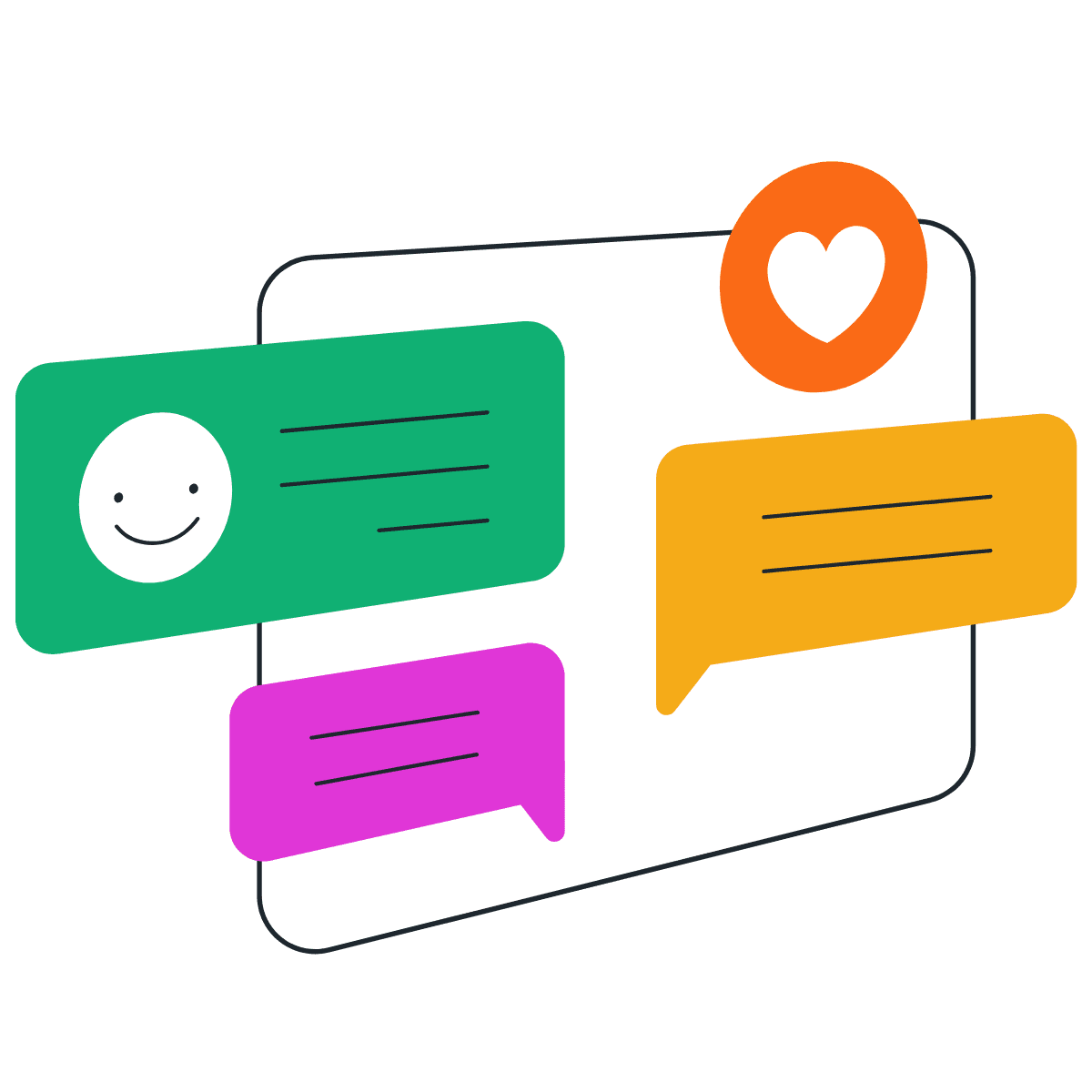Compare the best content audit tools to improve SEO, UX, and AI visibility
| TL;DR summary: Content audit tools gather your site’s pages and performance data into one view so you can see what to keep, update, merge, or remove. Prioritize platforms with fast crawling, rich metrics (traffic, rankings, UX), AI visibility insights, and time-saving integrations—so findings turn into clear, actionable improvements. |
Content audit tools help you find out which pages on your site are performing well, which are falling behind, and which are no longer worth keeping. I’ve seen many sites lose traffic and leads by ignoring this data. When that happens, search engines push key pages down, competitors capture intent with better content, and AI overviews answer questions before users visit the site.
A content audit addresses these issues by consolidating performance metrics, search visibility, content quality, and user experience into a single overview. And the right content audit tools make it easier to collect, organize, and act on that data.
In this guide, I share the auditing tools I use, how to choose one, and how to run an audit that improves results.
What are content audit tools?
Content auditing tools are software platforms that help you review, measure, and manage the content on your website. They automate the process of finding every page, gathering key metrics, and highlighting strengths, weaknesses, and topic gaps.
🧰 Guide: How to run a competitor website audit in 7 steps
A good audit tool will provide metrics such as search impressions, clicks, backlinks, bounce rate, engagement time, and Core Web Vitals scores. It can also flag missing metadata, thin content, and duplicate pages.
Instead of checking pages one by one, a content auditing tool displays your entire content inventory and performance data in one place, making it easier to decide what to keep, update, or remove.
What to look for in a content audit tool
Content audit tools have different strengths. Some focus on technical SEO, crawling your site to flag broken links and track page indexing. Others focus on content quality, scoring topical relevance, depth, and completeness.
Newer options provide information about how your pages appear in AI-generated results or are cited by AI assistants.
The best content auditing tools combine speed, accuracy, and relevant data to support your goals. Key criteria include:
- Crawl capacity and speed: The tool should be able to scan your entire site without timing out or hitting URL limits. Large sites may need enterprise crawlers that process hundreds of thousands of pages quickly.
- Range of data collected: Look for a tool that captures both technical and content data, including URLs, titles, publication dates, traffic, search rankings, backlinks, engagement metrics, Core Web Vitals, and structured data errors.
- Ease of use: Dashboards, filters, and prioritization scores make it easier to identify the pages that matter most.
- AI visibility insights: As AI-generated answers and search overviews become more common, choose a tool that shows whether your content appears in them and why.
- Integrations: Verify that the tool integrates with analytics platforms, reporting dashboards, or collaboration tools your team already uses.
- Collaboration features: For larger teams, user roles, shared dashboards, and task assignments help keep the audit moving without confusion.
In the next section, I review 20 top content audit tools that help SEO and marketing teams conduct more effective website audits.
20 best content audit tools
Choosing the right content audit tool can save hours of work and reveal insights you might otherwise miss. For this list, I focused on platforms that combine core essentials like site crawling, performance tracking, and content analysis with newer capabilities for AI search visibility and user experience.
- I weighed ease of use, breadth of metrics, integration options, and scalability for both small sites and enterprise-level audits.
- I also prioritized tools that frequently add and improve features, as SEO, content marketing, and AI search evolve rapidly.
Each review explains what the tool does best, how it fits into a content audit, and who will benefit most from using it.
1. Ahrefs
Ahrefs is an all-in-one SEO platform that includes a powerful Site Audit module. It crawls your website to identify more than 170 technical and on-page SEO issues, from broken links and missing tags to slow-loading pages. The audit results are grouped by category, making it easier to prioritize fixes and track progress over time.
For content audits, Ahrefs goes beyond technical data. You can combine crawl results with metrics from its Site Explorer, Keywords Explorer, and Content Gap tools to see how each page performs in search. This level of data integration makes it easy to identify pages with decreasing traffic, missing backlinks, or untapped keyword opportunities.
2. SEMrush
SEMrush offers a comprehensive Site Audit suite that covers technical SEO checks, Core Web Vitals, internal linking, and markup validation. The On-Page SEO Checker analyzes keyword use, meta tags, headings, and readability, then suggests specific actions to improve rankings. The audit runs on a scheduled or on-demand basis and assigns an overall health score so you can track improvements over time.
Within its auditing features, SEMrush detects duplicate content, missing meta tags, slow-loading pages, and security issues, such as mixed content. The platform also provides a crawl comparison tool to measure progress between audits and a detailed Issues tab that categorizes problems by severity, which helps you prioritize optimizations during a content audit.
3. Screaming Frog
The Screaming Frog SEO Spider is a desktop crawler that many SEOs use as the first step in an audit. It scans up to 500 URLs for free (unlimited with a license) and produces reports on broken links, redirect chains, response codes, meta descriptions, titles, duplicate content, and missing alt text.
During a content audit, Screaming Frog can quickly surface pages with thin or missing metadata, outdated titles, or duplicate content that needs consolidation. It also integrates with Google Analytics and Google Search Console to pull in traffic and ranking data alongside crawl results, helping you connect technical issues to performance metrics. Custom filters and exports make it easier to segment pages for updates, redirects, or removal.
4. Google Search Console
Google Search Console (GSC) is a free content audit tool from Google that shows how your site appears and performs in search. It tracks clicks, impressions, click-through rate, and average position for each page and query. GSC also reports on indexing status, sitemap submissions, structured data enhancements, mobile usability, and security issues. The URL Inspection tool allows you to check how Googlebot views a page and troubleshoot problems that may prevent it from appearing in search results.
GSC helps you understand which pages attract the most search traffic and which ones have dropped in visibility. You can identify queries where your rankings have slipped, pages that aren’t indexed, and structured data errors that could affect rich results. While it doesn’t offer the crawling capabilities of dedicated SEO software, GSC is essential for measuring search performance and identifying issues that require updates or optimization.
5. Google Analytics 4
Google Analytics 4 (GA4) is Google’s latest analytics platform, built to track user behavior across websites and apps. GA4 offers essential performance data that you can combine with crawl reports and SEO metrics. It uses an event-based model to capture interactions like page views, clicks, and form submissions, and it reports engagement time, scroll depth, and conversion rates.
GA4 helps you identify which pages drive the most conversions, hold user attention, or cause drop-offs. By integrating GA4 insights with a dedicated content auditing tool, you can better understand how search visibility and user engagement relate.
6. SurferSEO
SurferSEO focuses on on-page optimization by analyzing top-ranking pages for your target keywords. Its Content Editor scores your writing against SEO benchmarks and suggests word count, keyword usage, and headings to match those of high-performing competitors.
The Content Audit feature evaluates existing pages, highlighting missing terms, internal link opportunities, and structural changes to improve relevance.
SurferSEO is especially useful for refreshing older content. You can identify where pages lack topical coverage or lag behind competitors in SERP alignment, then follow step-by-step suggestions to close the gap. Surfer offers keyword research and a SERP Analyzer, making it ideal for teams that focus on both content quality and technical SEO.
7. MarketMuse
MarketMuse is an AI-powered content audit tool that evaluates your site’s topical authority and coverage. It uses topic modeling to find gaps, suggest related subtopics, and rank updates by potential impact. Its Content Briefs offer structured outlines with recommended headings, questions to answer, and internal link suggestions.
MarketMuse can analyze your entire content inventory and assign quality scores to each page. This helps you identify gaps in coverage, find opportunities to expand content to better match user intent, and improve topic clusters. It’s ideal for teams seeking to establish authority in specific subjects through well-structured, comprehensive content.
8. Frase
Frase combines AI-powered research with optimization tools to improve both new and existing content. It analyzes search results to generate outlines, brainstorm topic ideas, and identify common questions users ask. The platform features a research brief builder and a content optimization tool that scores your draft against competitors’ content.
Frase quickly spots opportunities to add missing topics, answer additional questions, or reorganize content for better clarity and depth. Its question engine is useful for identifying gaps in FAQ sections or blog posts. While it’s less focused on technical SEO than tools like Screaming Frog, it excels at aligning content with search intent.
9. ContentKing
ContentKing is a real-time content audit tool that continuously monitors your site for SEO issues and changes. Its dashboard updates instantly, showing a health score and listing issues by priority. It integrates with Google Analytics, Adobe Analytics, and Slack, allowing teams to receive alerts and track performance without manual checks.
ContentKing’s continuous monitoring allows you to identify and resolve issues as they arise, rather than waiting for scheduled crawls. This makes it especially valuable for sites that change often or have large teams managing updates. Its prioritization metric helps you focus on the pages that matter most to your SEO and traffic goals.
10. Clearscope
Clearscope uses natural language processing to analyze high-ranking pages for a specific keyword and recommend terms, structure, and length to improve search performance. It creates content scores based on word count, readability, and relevance, and it integrates with Google Docs and WordPress for easy optimization while writing.
Clearscope helps identify where existing pages fall short compared to top competitors. By following its keyword and structural suggestions, you can improve topical coverage and make updates that better match search intent.
11. SEOClarity
SEOClarity is an enterprise-level content audit tool and SEO platform that combines technical auditing, keyword tracking, and AI-powered content optimization in a single interface. Its site audit module crawls your site to identify broken links, indexation issues, Core Web Vitals problems, and internal linking opportunities. The platform also monitors rankings across devices and locations, linking performance directly to specific pages.
SEOClarity’s Content Fusion feature analyzes top-ranking competitor pages for your target keywords and suggests improvements in topical coverage, structure, and relevance. By integrating technical SEO insights with detailed content analysis, SEOClarity offers a comprehensive basis for determining which pages to update, consolidate, or retire.
12. Diffbot
Diffbot is a data extraction and knowledge graph platform that tracks how your content is used and cited across the web. Its APIs can detect when AI systems reference your site, what text they use, and how your brand appears in those outputs.
Diffbot’s citation tracking provides valuable insights into AI search visibility. This data can help guide updates that boost the chances of your content appearing in generative search results and AI summaries. It’s ideal for organizations seeking to understand their presence in both traditional and AI-powered search.
13. JetOctopus
JetOctopus is a cloud-based content audit tool and SEO crawler designed for large websites. It combines fast crawling with log file analysis to give a complete view of how search engines access and index your site. The platform also supports JavaScript rendering, helping you audit content that uses dynamic elements.
For a content audit, JetOctopus helps you identify crawl budget waste, monitor internal linking patterns, and find technical barriers that may limit search visibility. Its segmentation and filtering features make it easy to focus on specific parts of a site, like blog content or product pages, and link findings to performance metrics.
14. Otterly.ai
Otterly.ai tracks how brands and content appear in answers generated by large language models like ChatGPT, Gemini, and Perplexity. It monitors mentions, citations, and context, providing a clear view of your presence in AI-driven search results. Unlike traditional SEO tools, Otterly.ai focuses on how AI assistants use your content, not just how search engines rank it.
Otterly.ai’s insights help identify missed opportunities for AI visibility. If AI platforms aren’t citing certain high-value pages, you can improve the structure, metadata, and topical coverage to match the types of sources AI assistants prefer to surface.
15. Brandwell.ai AI Traffic Analytics
Brandwell.ai features AI Traffic Analytics, a content auditing tool that monitors visits from AI crawlers like GPTBot (ChatGPT), Google-Extended (Gemini), and ClaudeBot. It reveals which pages AI platforms access, how often they visit, and whether those visits lead to citations or influence AI-generated summaries.
Brandwell.ai’s AI Traffic Analytics provides insight into how generative AI systems discover and engage with your content. If AI is overlooking high-value pages, you can modify the structure, metadata, or internal links to enhance AI crawlability and citation prospects.
16. Sitebulb
Sitebulb is a desktop and cloud-based crawler that generates detailed, visual reports for technical SEO audits. It categorizes issues, explains why they are important, and offers instructions on how to fix them. With support for JavaScript crawling and comparison reports over time, Sitebulb is popular for ongoing site health monitoring.
When used in a content audit, Sitebulb’s visuals and prioritization tips make it easier to communicate technical findings to non-technical stakeholders. Its integration with Google Analytics and Search Console also allows you to connect crawl results with performance data.
17. Acquia Optimize (formerly Monsido)
Acquia Optimize is a website optimization platform that combines accessibility scanning, content quality assurance, and compliance monitoring. It tests your site against WCAG accessibility standards, flags broken links, identifies SEO issues, and checks for brand and style consistency. The platform also includes tools for monitoring site performance, security, and content freshness.
Acquia Optimize offers a centralized dashboard that enables you to track accessibility errors, outdated or low-quality content, and technical issues in one convenient location. Its automated scanning and reporting make it easier to ensure your site meets both user experience goals and legal compliance requirements while maintaining a consistent content standard across all pages.
18. Screpy
Screpy is an AI-powered SEO and content audit tool that monitors site health, keyword rankings, and page performance. It offers automated site audits that check for broken links, slow load times, SEO issues, and mobile usability problems. Its keyword tracking feature allows you to monitor SERP positions and get alerts when rankings change.
Screpy provides a balanced view of both technical and content-related factors. You can identify underperforming pages, track the effects of updates, and oversee overall site health from a single dashboard. Its automated alerts make it ideal for teams that want continuous monitoring without the need for manual checks.
19. Rankscale
Rankscale monitors how your content performs in AI-generated search results, providing detailed reports on which citations and entities drive those answers. It shows when your site appears, the context around your mention, and which other sources are cited alongside yours.
Rankscale highlights where you are gaining or losing AI citation share. This data helps inform decisions to update topics, add supporting details, or improve formatting to match AI preferences, making it a valuable tool for modern SEO and AI visibility tracking.
20. Lumar (formerly Deepcrawl)
Lumar is an enterprise-level website optimization platform with modules for technical SEO, accessibility, site speed, and AI search visibility. Its high-speed crawler can process hundreds of thousands of URLs, and its customizable dashboards let teams track any metrics they choose.
For content audits, Lumar helps teams identify technical issues, evaluate AI readiness, and monitor improvements over time. Its Generative Engine Optimization (GEO) analysis is especially valuable for understanding how AI search engines interpret and display your content.
Let’s give your content a checkup
A well-executed content audit can uncover hidden opportunities, optimize underperforming pages, and help keep your site competitive in search results. The right tools make the process faster, but you still need a strategy to decide what to update, merge, or remove.
That is where I come in. I help businesses conduct efficient, high-impact content audits that save time and yield measurable results. From choosing the right content audit tools to interpreting the data and implementing improvements, I handle the process so you can focus on your business.
Schedule a free consultation to discuss how we can improve your content’s performance.
FAQs about content audit tools
Which tools show if my content is being cited by AI tools?
Otterly.ai tracks when AI assistants like ChatGPT, Gemini, and Perplexity cite your content, including citation share, brand mentions, and changes in sources over time. Rankscale monitors your AI citation presence and shows which other sites appear alongside yours in AI-generated answers. Diffbot can identify when AI models quote your content and provide the original source, while Lumar’s Generative Engine Optimization (GEO) module highlights technical and semantic issues that may prevent your pages from appearing in AI-driven search results.
What's the difference between a content audit tool and a crawler?
A crawler systematically browses your site and collects raw data, like Screaming Frog, JetOctopus, or Lumar’s crawler. These tools are essential for discovering pages and technical issues. A content audit tool builds on crawl data by integrating performance metrics, analyzing content quality, and providing actionable recommendations.
For example, Screaming Frog generates detailed inventories with analytics data, screenshots, and metadata reports, while SurferSEO evaluates content alignment with top-ranking pages.
Can I run a content audit using free tools only?
You can perform a basic audit using free tools like Google Search Console and the free version of Screaming Frog (up to 500 URLs). These tools give a foundation for identifying technical issues and tracking basic performance metrics. However, for advanced features such as AI citation tracking, large-scale crawling, content scoring, and collaboration, you’ll need paid tools like Ahrefs, SEMrush, Lumar, or Otterly.ai.
What's the best content audit tool for large sites?
For large enterprises with hundreds of thousands of URLs, Lumar provides a high-speed crawler (up to 450 URLs per second) along with customizable dashboards for technical SEO, AI visibility, site speed, and accessibility. JetOctopus also scales effectively for massive sites and integrates performance data directly into crawl results. Rankscale is useful for tracking AI citation performance at scale, while seoClarity works well when you need an all-in-one enterprise SEO and content audit solution.
Do I need different tools for blog vs landing page audits?
The core audit process is similar for both, but you may focus on different metrics. For blog posts, emphasize content quality, topical coverage, and search visibility. Tools like SurferSEO, MarketMuse, and Clearscope are helpful in this regard. For landing pages, prioritize conversion rates, page speed, and technical health using Sitebulb, Lumar, or Acquia Optimize. GA4 is vital for tracking engagement and conversions across both content types.







